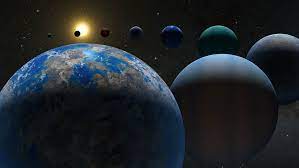NASA and the European Space Agency (ESA) are teaming up to explore one of the biggest puzzles of the Universe: dark energy.
A new space telescope, Euclid, which will explore the dark Universe, is launching in July on a SpaceX Falcon 9 rocket from Cape Canaveral in Florida. With an important contribution from NASA, the ESA mission will look into why the Universe is expanding, a still unknown phenomenon that scientists have dubbed “dark energy.”
Currently, more is unknown than known about dark energy. Scientists know how much dark energy there is because they know how it affects the Universe’s expansion.
Everything else about dark energy is a complete mystery, NASA says.
But the mystery is huge, and a first step to solving it could be the beginning of understanding at least a fraction of the Universe. Dark energy makes up 68% of the Universe. Another 27% is made up of dark matter. And only 5% is the rest—everything on Earth and everything ever observed by scientists with all of their instruments.
So NASA and the ESA are joining forces to try to shed some light on one of the Universe’s greatest mysteries.
Scientists are unsure whether the universe’s accelerated expansion is caused by an additional energy component, or whether it signals that the current understanding of gravity needs to be changed in some way.
By May 2027, NASA’s Nancy Grace Roman Space Telescope will join ESA’s mission Euclid to explore this puzzle in ways that have never been possible before. NASA’s Roman and ESA’s Euclid will be used by astronomers to test the two theories about dark energy at the same time.
“Twenty-five years after its discovery, the universe’s accelerated expansion remains one of the most pressing mysteries in astrophysics,” said Jason Rhodes, a senior research scientist at NASA’s Jet Propulsion Laboratory in Southern California. Rhodes is also a deputy project scientist for Roman and the U.S. science lead for Euclid.
“With these upcoming telescopes, we will measure dark energy in different ways and with far more precision than previously achievable, opening up a new era of exploration into this mystery.”
There are different theories about dark energy. One explanation is that it is a property of space. Another is that it is a new kind of dynamical energy fluid or field, something that fills all of space but something whose effect on the expansion of the Universe is the opposite of that of matter and normal energy.
Another possible explanation could be that Albert Einstein’s theory of gravity is incorrect.
“The thing that is needed to decide between dark energy possibilities – a property of space, a new dynamic fluid, or a new theory of gravity – is more data, better data,” NASA says.
So, NASA and ESA hope that their Euclid and Roman missions, which will map parts of the Universe, could be the beginning of understanding the dark energy mystery.
The Euclid space telescope will create a map of the large-scale structure of the Universe across space and time by observing billions of galaxies out to 10 billion light-years across more than a third of the sky. Euclid will explore how the Universe has expanded and how structure has formed over cosmic history, revealing more about the role of gravity and the nature of dark energy and dark matter.
“Together, Euclid and Roman will add up to much more than the sum of their parts,” said Yun Wang, a senior research scientist at Caltech/IPAC in Pasadena, California, who has led galaxy clustering science groups for both Euclid and Roman.
“Combining their observations will give astronomers a better sense of what’s actually going on in the universe.”

 Iran Energy News Oil, Gas, Petrochemical and Energy Field Specialized Channel
Iran Energy News Oil, Gas, Petrochemical and Energy Field Specialized Channel



